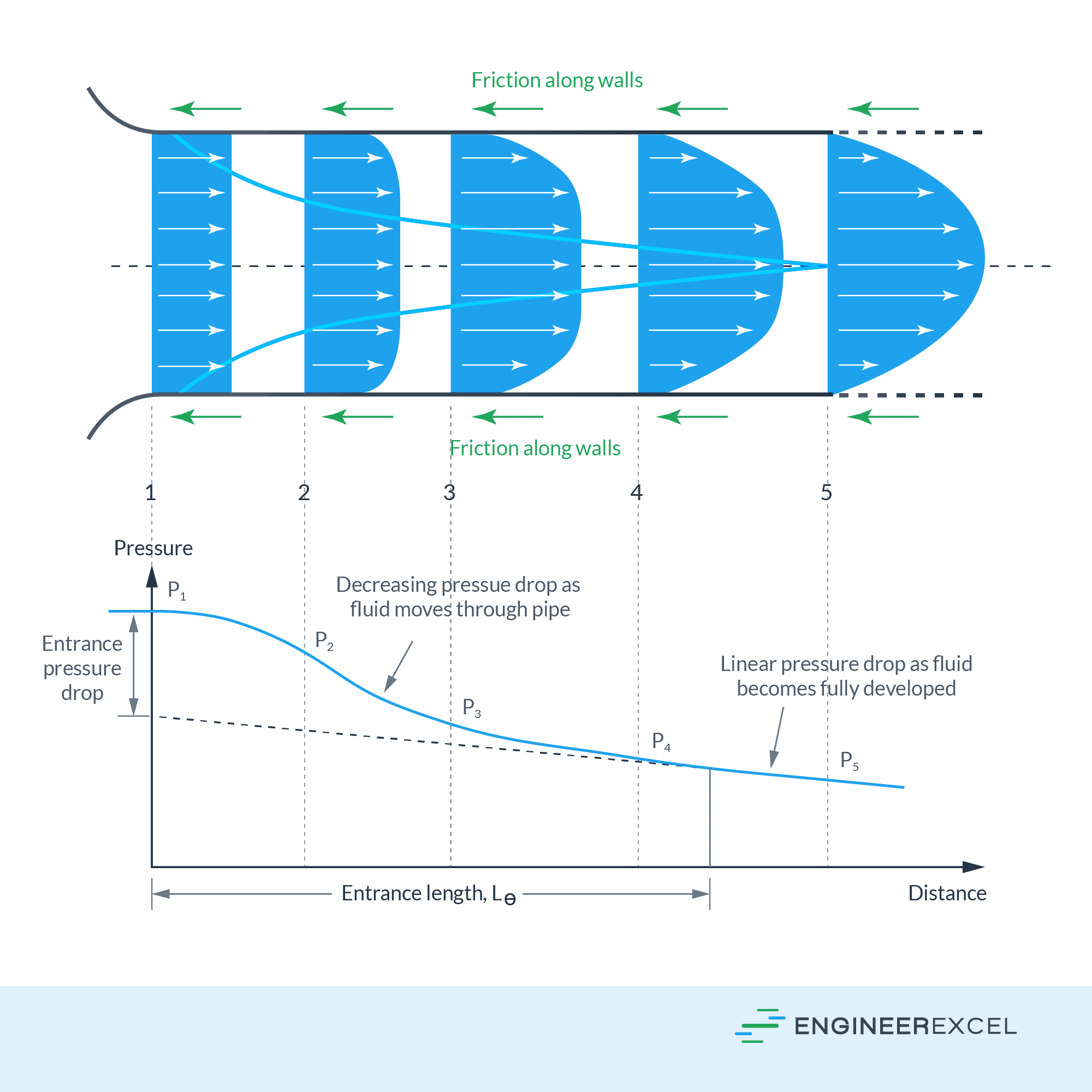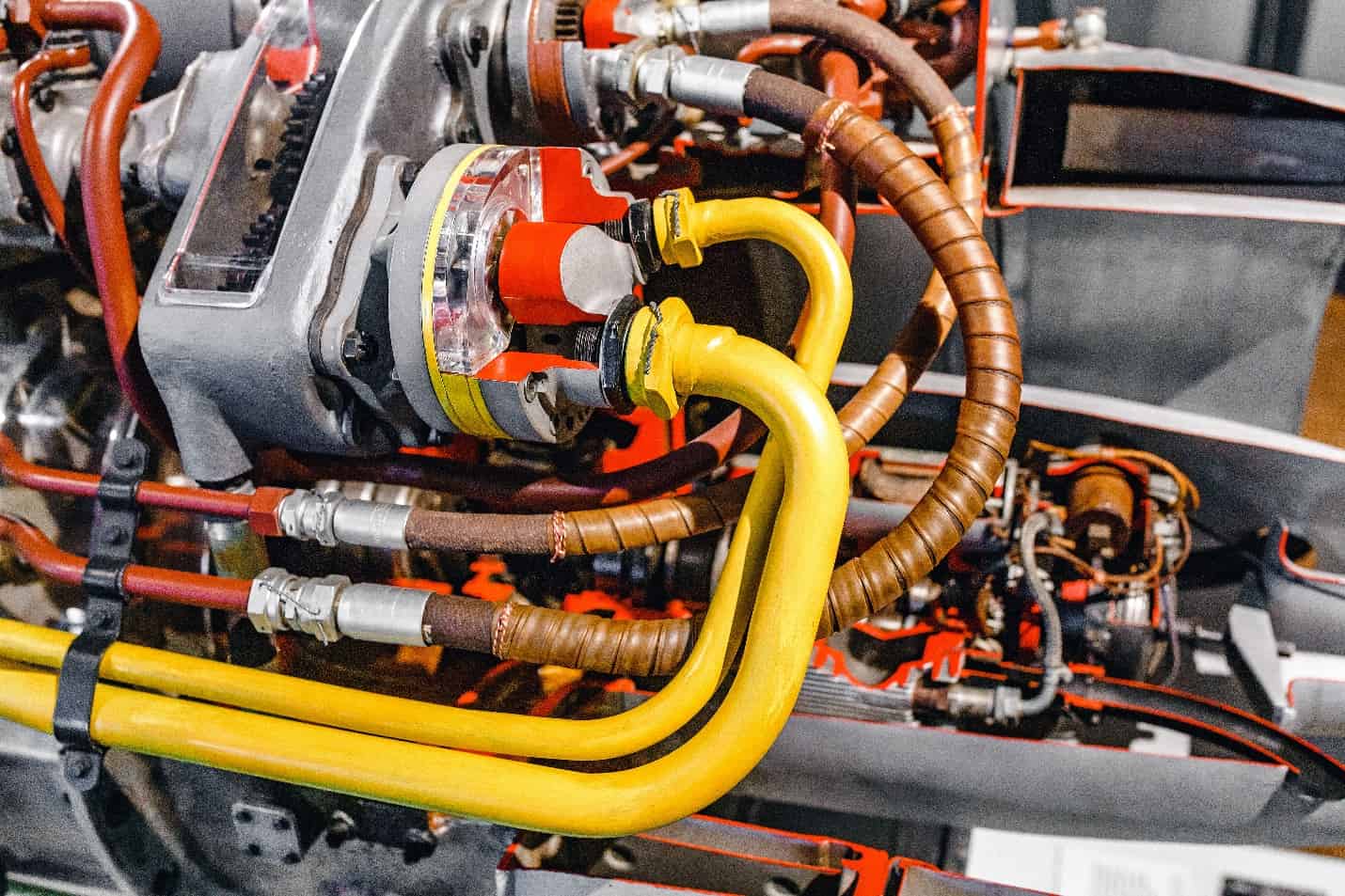In computational fluid dynamics (CFD) simulations, accurately capturing the entrance length is crucial for obtaining accurate results in fluid flow analysis. Entrance length is the distance required for a fluid to fully develop its flow profile when entering a pipe or channel from a uniform velocity inlet. Understanding this parameter is essential in applications ranging from HVAC systems to aerospace and automotive engineering.

Understanding Entrance Length
In fluid dynamics, entrance length is an important concept to grasp, as it helps predict the development of flow patterns in pipes and channels. This section will discuss the significance of entrance length and how it can be calculated using various approaches.
Entrance length is the distance from the entrance of a pipe or channel, where the flow begins, to the point where the flow becomes fully developed. In a fully developed flow, the velocity profile and pressure drop remain unchanged along the flow direction. The entrance length depends on the Reynolds number, which measures the ratio of inertial forces to viscous forces in the flow.


Elevate Your Engineering With Excel
Advance in Excel with engineering-focused training that equips you with the skills to streamline projects and accelerate your career.
For laminar flow, the entrance length can be estimated using the following formula:
L_e = 0.05 * Re * D
where L_e is the entrance length, Re is the Reynolds number, and D is the diameter of the pipe.
For turbulent flow, the entrance length is typically longer and can be estimated using the formula:
L_e = 4.4 * Re^(1/6) * D
The entrance length plays a vital role in designing pipelines and channels. Engineers must ensure the flow is fully developed to achieve a uniform pressure drop and avoid undesirable effects such as premature wearing or pressure fluctuations.

Importance in Fluent Simulations
In computational fluid dynamics (CFD) simulations using Fluent, understanding the entrance length is crucial for achieving accurate results. Furthermore, precise representation of flow development significantly impacts various engineering applications.
In Fluent simulations, using an appropriate entrance length is vital because:
- It ensures that the flow is fully developed and accurate pressure drops, velocity profiles, and turbulence characteristics can be obtained.
- Inaccurate representations of entrance length can lead to discrepancies in simulation results and affect the performance evaluation of engineering devices.
- By considering entrance length effects, designers can minimize unnecessary computational costs and better target specific areas of interest within their simulations.
When setting up a Fluent simulation, calculating the appropriate entrance length based on the Reynolds number and flow regime is an essential first step:
| Flow Regime | Entrance Length Calculation |
| Laminar | Le = 0.05 * Re * D |
| Turbulent | Le = 4.4 * D * (Re)^(-1/6) |
For example, ensuring that the model’s dimensions properly account for the required entrance length is essential in pipe flow simulation. By doing so, the accuracy of the simulation results, such as pressure drops and velocity profiles, will be significantly improved, leading to more reliable engineering analyses and predictions.
How to Calculate Entrance Length
Entrance length is critical in fluid dynamics, particularly when analyzing flows within pipes and ducts. It represents the line length required for the flow to develop fully. This section will discuss how to calculate entrance length in Fluent.
To calculate entrance length, you must consider two primary factors: the flow velocity and the pipe’s Reynolds number. The Reynolds number (Re) is a dimensionless quantity that defines the flow’s relative importance of inertial and viscous effects. It is calculated using the following formula:
Re = (density × velocity × pipe diameter) / dynamic viscosity
Once the Reynolds number is determined, you can calculate the entrance length (Le) using the following relation:
L_e = 0.05 * Re * D
This formula applies to laminar flow, where Re is less than 2300. For turbulent flow, where Re is greater than 4000, it is recommended to use the following relation:
L_e = 4.4 * Re^(1/6) * D
Note that these formulas should be used as approximations and may not accurately predict entrance length in all cases. Remember that Fluent simulations can be beneficial in providing accurate entrance lengths under various conditions. To further improve the accuracy of your entrance length calculations, consider referring to any experimental data available.
Here’s a quick summary of the steps to calculate entrance length:
- Calculate the Reynolds number based on flow velocity, pipe diameter, and fluid properties.
- Estimate the entrance length by using the appropriate formula for laminar or turbulent flow.
- Verify the results using Fluent simulations and, if available, experimental data.
By following these steps, you can effectively calculate entrance length in Fluent, helping you achieve better insights into fluid flow behavior within pipes and ducts.
How to Measure Entrance Length in Fluent
To measure the entrance length from Fluent results, you can follow these steps:
- Run a simulation in Fluent with the desired geometry and boundary conditions.
- Post-process the simulation results using Fluent’s built-in tools or export the data to third-party software such as MATLAB or Python.
- Plot the velocity profile along the length of the channel or pipe.
- Determine the point at which the velocity profile becomes fully developed. This can be done by looking at the slope of the velocity profile or by using a criterion such as the Reynolds number.
- Measure the distance from the inlet to the point where the velocity profile becomes fully developed. This distance is the entrance length.
It is important to note that the entrance length can vary depending on the geometry and flow conditions. Therefore, it is recommended to perform sensitivity analyses to determine the effect of different parameters on the entrance length.
Best Practices and Tips
When dealing with entrance length in Fluent, following best practices and tips is essential to ensure accurate and efficient simulation results. The following points will help you maximize your computational resources and optimize your Fluent experience.
1. Properly size the inlet section: Make sure that the inlet section of your model has enough length to allow for fully developed flow before entering the area of interest. A commonly used rule of thumb is to use an entrance length equivalent to 10 times the hydraulic diameter for laminar flow and 40-60 times the hydraulic diameter for turbulent flow.
| Flow Type | Entrance Length |
| Laminar | 10 x Hydraulic diameter |
| Turbulent | 40-60 x Hydraulic diameter |
2. Employ appropriate boundary conditions: Appropriate boundary conditions should be selected based on the assumptions made during the modeling process. Selecting the proper boundary condition type (inlet, wall, etc.) and setting appropriate values (velocity, pressure, mass flow, etc.) to ensure accurate flow predictions is crucial.
3. Use mesh refinement: Employing mesh refinement techniques, particularly in the entrance region, can help to capture the flow details effectively. Ensure that the refined mesh maintains an aspect ratio close to 1 to improve the numerical accuracy of the simulation.
4. Leverage the suitable turbulence model: Different turbulence models can lead to different flow predictions. Familiarize yourself with the available models in Fluent and choose the one that best suits your application.
5. Validate your model: Compare your simulation results with experimental or analytical solutions to ensure the validity of your model. This step is critical in building confidence in your findings and making informed decisions based on the predictions from Fluent.
Practical Applications
Entrance length in Fluent is essential for accurate simulation and analysis of fluid flow in various industries. This section explores some practical applications where entrance length plays a crucial role.
Aerospace and Automotive Industries
Aerospace and automotive industries use entrance length simulations to optimize the performance of vehicles by reducing drag and improving fuel efficiency. Accurate entrance length calculations in Fluent help engineers design and analyze interior and exterior flow conditions, leading to better aerodynamic designs and enhanced vehicle performance.

Heating, Ventilation, and Air Conditioning (HVAC)
In HVAC systems, accurate entrance length calculations are necessary to ensure proper mixing of air supply and efficient distribution in indoor spaces. In addition, it helps engineers design ducts and vents with minimal pressure losses, reducing energy consumption and providing a comfortable environment for occupants.
Chemical Processing Industry
Entrance length calculation in Fluent enables the precise determination of mixing and reacting lengths in chemical reactors and processing equipment, ensuring optimal product formation and separation conditions. In addition, accurate simulations of fluid flow properties can minimize the chances of undesirable chemical reactions and improve the overall process efficiency.
Environmental Engineering
Entrance length simulations can help engineers identify appropriate prevention and mitigation strategies for pollutants in environmental systems. These calculations are vital in modeling the transport and dispersion of contaminants in air and water, allowing engineers to design effective pollution control systems and assess the impact of various pollutants on the environment.
